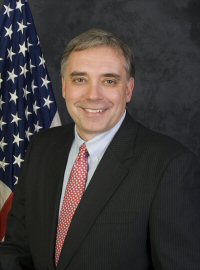Pension overhaul could save $11B over 30 years but offers no immediate relief

By Eric Boehm | PA Independent
An effort to overhaul Pennsylvania’s public sector pension plans got a key thumbs-up Wednesday but still faces several hurdles and would do little to solve the short-term pension problems in this year’s state budget.
The plan, sponsored by state Rep. Mike Tobash, R-Schuylkill, would scrap the current defined benefit pension systems in favor of a so-called “stacked hybrid” pension plan that would incorporate elements of the current system and the 401(k) plans more commonly found in the private sector. The changes would only affect new hires, while current employees and retirees would keep the current benefit structure.
TOBASH: If there is going to be a major pension bill passed this spring in Harrisburg, it will probably be some version of the package unveiled this week by state Rep. Mike Tobash.
The Public Employees Retirement Commission, or PERC, which advises the General Assembly on pension issues, published an actuarial analysis of the plan showing long-term savings of about $11 billion over the next 30 years, with most of the savings being realized more than two decades from now.
“It’s a shift in liabilities and it’s a significant change,” said Jim McAneny, executive director of PERC. “But it will take years before the savings are fully realized.”
A different analysis by actuaries working under contract for the Corbett administration forecast $14 billion in savings.
Pennsylvania is trying to come to terms with a $48 billion unfunded liability that’s expected to grow to more than $65 billion within a few years, absent any changes.
Tobash said Wednesday that solving the structural problems in the pension system have to come first, before discussions about paying down the existing debt.
“Short-term fixes are what has gotten us into this mess,” Tobash said. “We have to start digging ourselves out of this situation. There is no overnight fix.”
The current defined benefit system places the investment risk fully on the employer — which is either the state or the school district in the case of public pensions. Tobash’s hybrid model would maintain a defined benefit system for the first $50,000 in annual salary for each employee.
Employees earning more than that amount would have a 401(k)-style defined contribution plan “stacked” on top of the defined benefit plan.
Essentially, there will be a “safety net” defined benefit plan for all employees, which can be added to with a defined contribution plan, in which individual employees can choose how much risk they want to take, McAneny said.
From the state’s perspective, those changes will split the risk between the employer and the employees, likely preventing the state from running up massive pension debts in the event of another severe downturn in the markets.
For now, Tobash’s bill does not address short-term issues, such as the ballooning pension payments owed by the state and school districts over the next few years.
In a tight budget year, the Corbett administration has been keen to find savings by reducing pension payments. Annual pension payments are projected to grow from $1.5 billion this year to more than $2 billion next year and higher than $4 billion by 2020.
To address the short-term costs would require potentially unlawful cuts to current employees and retirees benefits. By only making changes for future hires, those legal issues are avoided, McAneny said.
“That’s the limitation on what we can do, constitutionally,” he said.
MARKOSEK: Democrats are unlikely to support the Republican pension overhaul. State Rep. Joe Markosek said Wednesday that Tobash’s plan will hurt workers without providing much benefit for the state budget.
But making the changes Tobash has proposed will only improve the state’s long-term pension situation if lawmakers fully fund the plans, McAneny said. That’s something that hasn’t been done for more than a decade.
Politically, there are still plenty of stumbling blocks to getting the pension bill passed.
House Democrats on Wednesday poked holes in Tobash’s plan. They would prefer to continue with a pension funding formula approved in 2010, which also included cuts to future employees’ benefits.
A memo circulated by state Rep. Joe Markosek, D-Allegheny, minority chairman of the House Appropriations Committee, pointed out the Tobash plan did not provide any short-term savings for the state or school districts and called attention to a component of the Tobash plan that would eliminate a $100 per month health-care supplement for retired school workers.
“We need to focus on paying down the pension debt — not on making the long-term situation worse just to score political points or free up revenue for an election-year budget,” wrote Markosek. “The only way to reduce the debt is to make the payments.”
Unions also oppose the pension overhaul.
Rick Bloomingdale, president of the Pennsylvania AFL-CIO, said Wednesday that Tobash’s proposal would hurt future workers’ retirement security because the $50,000 limit for the defined benefit portion of the new plan would be indexed by 1 percent per year — not enough to keep up with inflation.
Tobash may also face opposition from the conservative flank of his own party, where many members would favor a full transition to a 401(k)-style retirement system, instead of his hybrid approach.
The Commonwealth Foundation, a free market think tank that favors a 401(k) system for public pensions, published a report this week showing how the state could save $52 billion over the next three decades by making that switch – something lawmakers in Oklahoma approved earlier this month.
Still, Tobash said ,Wednesday’s report from PERC was a key step forward for the legislation, which he hopes to have on Corbett’s desk by the end of June when the state budget is also due.
“No time like the present,” he said.
Boehm is a reporter for PA Independent and can be reached at Eric@PAIndependent.com. Follow @PAIndependent on Twitter for more.







